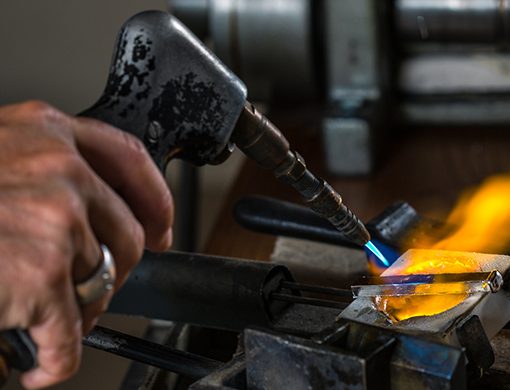Custom alloys can help streamline production
Although custom alloys often are associated with new and advanced applications, they also can solve real-world production problems. For more than a century, Belmont Metals, based in Brooklyn, New York, has been working collaboratively with its customers to create materials that can improve their manufacturing processes.
Coming up with a custom alloy solution requires a thorough evaluation—and a little bit of trial and error. In one application, a company was using Belmont’s Art Casters Brass Alloy to manufacture scale-model railroad parts. During production, some of the parts were cracking, and all of them were picking up Silicon oxide.
To address these concerns, Belmont created a new Leaded yellow Brass alloy that no longer included Silicon. Removing the Silicon decreased the fluidity of the alloy, but solved the Silicon oxide issue. The next step was to create a modified Lead Brass alloy, reducing the Iron impurity level to 0.05 percent from 0.5 percent to reduce the cracking issues and increasing the Aluminum content to offset the loss of Silicon and increase fluidity. The entire process involved testing three different alloys, and the final result improved the company’s castings and reduced production costs.
In addition to solving these types of production problems, custom alloys can help companies keep up with constantly changing regulations. Jewelry and toy manufacturers, in particular, have to stay abreast of the laws governing toxic metal in products that come into close contact with humans. A global jewelry manufacturer turned to Belmont Metals for help developing a high-quality Lead-free alloy that would allow them to cast parts with low porosity. The company was looking for a Tin-based material that could seamlessly integrate into its manufacturing process. Belmont went through several iterations of the original alloy and came up with a formula that would require little or no change to the production lines, and after several years of use, that alloy remains a staple for the jewelry manufacturer.
The ability to develop an alloy to exact specifications also can pave the way for companies to recreate historical materials, like Paktong. This alloy, made from Copper, Nickel and Zinc, was imported into England from China and resembles Silver. Belmont worked with an antiquities company who wanted to duplicate the alloy to manufacture candelabras. The company already had consulted with Oxford University to analyze a casting from 1720 for duplication, but the defined formula did not cast well and the color was not correct.
After further study, Belmont’s metallurgists were able to determine that certain trace elements needed to be added to the melt to act as grain refiners and color enhancers. After adding these elements, Belmont shipped the alloy to a casting house in Pennsylvania, and the company finally was able to cast the finished products with the right color and consistency.
Moving beyond standard alloys gives companies the flexibility to adjust compositions and forms, solve problems and meet specifications. The development of custom alloys requires creativity and time, but can be the perfect solution for challenging metallurgical requirements.

